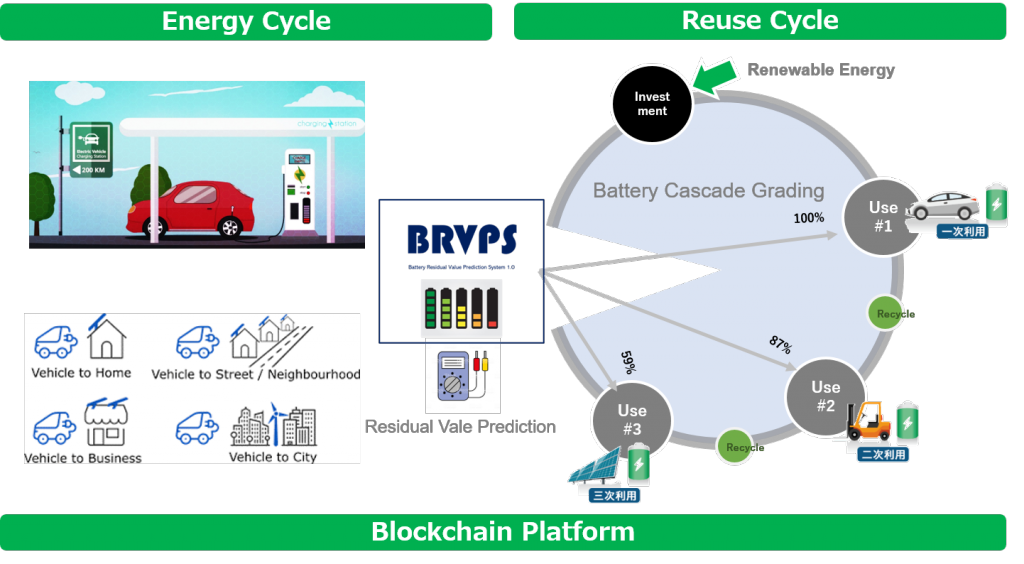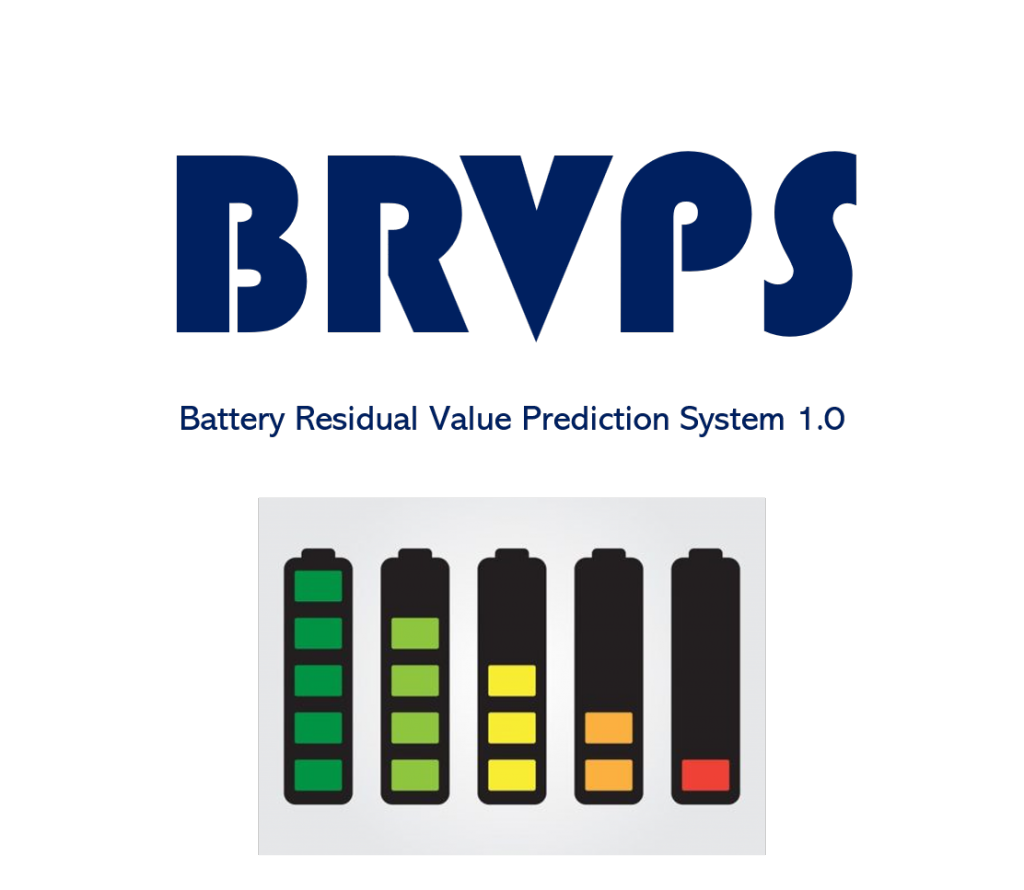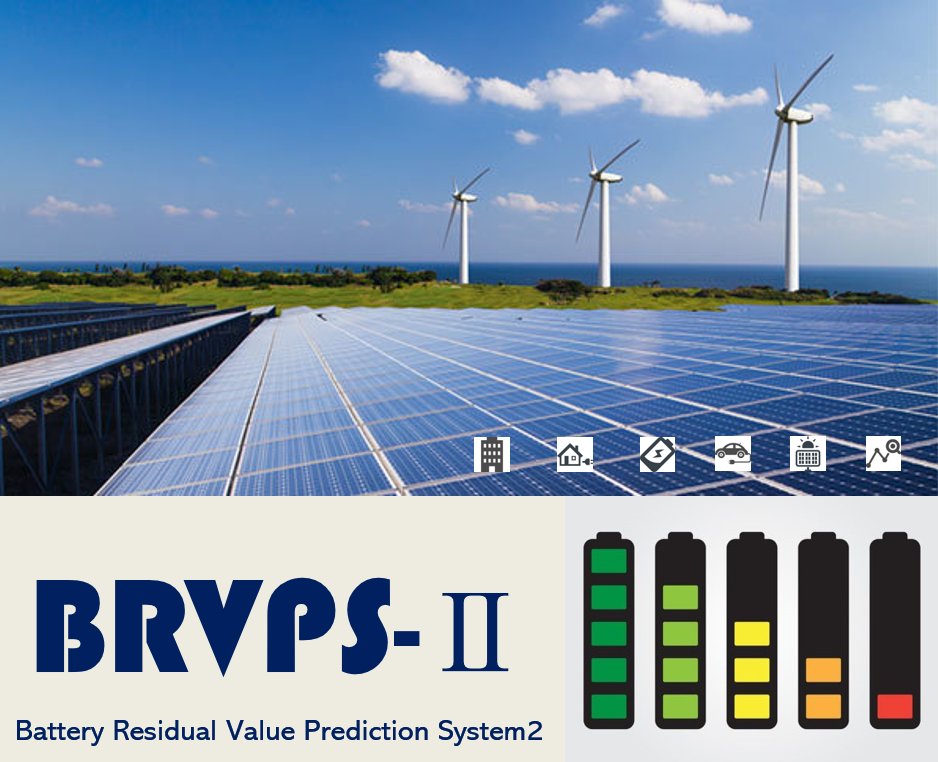The Battery Residual Value Prediction System
– Strengthening the Life Cycle Management
It is possible to more accurately determine the value of second-hand rechargeable batteries by managing each individual battery’s information on the blockchain. Each battery’s value lies with how much energy storage capacity remains, which is affected by their own unique history of usage, such as rapid charging and discharging, the environmental temperature, etc., that causes physical changes that lower capacity. This information can be measured and recorded, and can be associated with each user, reseller, or recycler as it changes ownership. As trustworthiness of the battery quality can be enhanced for the user, end-of-life batteries can be sold at an appropriate resale price that is commensurate with the battery quality.

Kaula, Inc. (Kaula), a blockchain developer in Japan, has developed a Battery Residual Value Prediction System (BRVPS) to realize such traceability of batteries for EVs. The BRVPS works closely with the battery management system (BMS) that are installed on lithium batteries, by retrieving information the BMS collects, which EV manufacturers and owners, resellers and recyclers in the secondary market, as well as businesses in the secondary and tertiary markets can record on a blockchain. Based on the recorded information, the residual value of the battery is predicted and graded. For primary, secondary, and tertiary users, the residual value of batteries is visualized based on highly transparent information, thereby facilitating the circulation of batteries. As a result, by creating a cascade of battery reuse (linkage and chain), it is possible to reduce the likelihood for generating waste batteries.
Award
Global Blockchain Challenge: China Wanxiang is investing billions to build the world’s first smart city driven by blockchain
Full life-cycle management system for batteries based on blockchain technology.
Summary: A distributed battery database system based on blockchain technology, generating and storing data of battery usage and condition, will be used as a solution for trust-worthy, secure and commercially viable full-life-cycle management of batteries as assets across a diverse range of usages.


Wanxiang Blockchain Contest 
Roadmap
2019Q1 Release
2020Q3 Plan
2021Q2 Plan
BRVPS1.0 Reference Implementation
BRVPS1.0 for EV/ESS Battery
BRVPS2.0 for Cloud Battery

